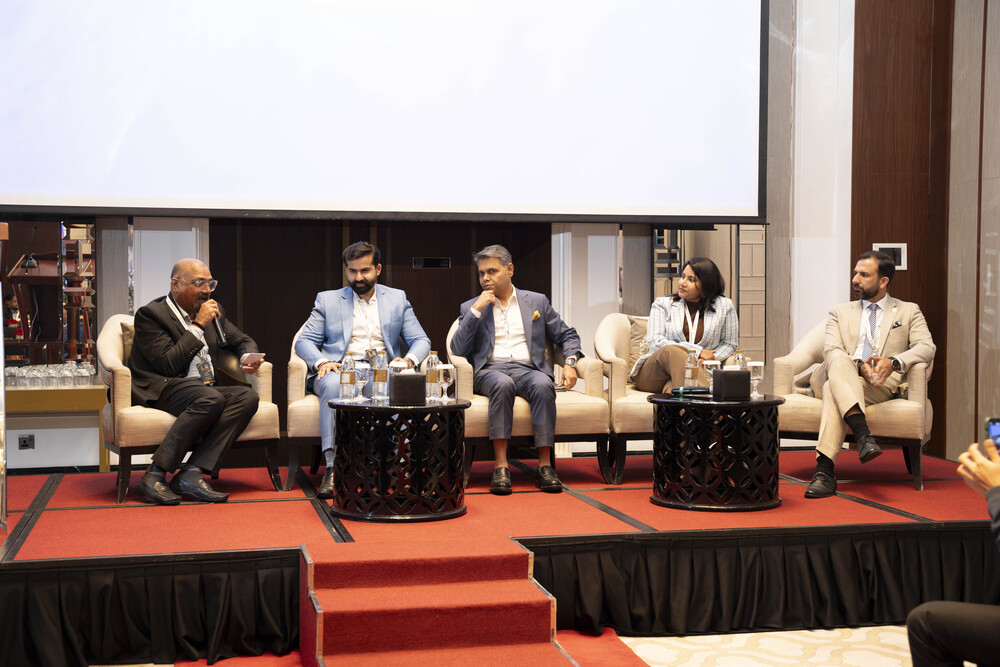YouTube held its annual Brandcast event in the UK on October 13, bringing together independent content creators and brands for a night of knowledge-sharing and musical performances, with Rita Ora bringing the event to a close on a high note. It was also a celebration of the platform’s tenth anniversary.
Communicate also got a chance to peek into the YouTube Space in London, which provides content creators with free access to the studio, equipment and advice on analyzing and monetizing their channel’s content.
Shoot for the stars
The YouTube Space, in its simplest form, can be described as a bunch of studios and sets put together for independent content creators to use. But David Ripert, head of YouTube Spaces EMEA, prefers to call it a film school with a bit more. The space is built on three pillars: learning, creating and connecting. It provides free studios and equipment to creators who want to improve the production quality of their content and learn more about not just creating good content, but also optimizing it.
The first such space opened in 2012 and over the span of the past three years, more spaces have cropped up in LA, Tokyo, New York, Sao Paulo, Berlin and Paris.
The qualification process for using the space is fairly simple. Creators have to register as a partner on youtube.com/space and complete an application. There are a minimum number of subscribers that a creator or channel should have in order to qualify. This number varies from country to country, depending on the volume of users. For instance, in London, a minimum of 5,000 subscribers is required, whereas in Paris, this number is only 1,000. Anyone who has a YouTube channel and the minimum number of subscribers is considered a creator. This could mean small businesses as well as brands – although there’s a separate team handling the latter. For instance, Ripert said that in the MENA region, there are a lot of production companies that use YouTube.
The YouTube Space goes so far as to also create customized sets for its users. “We don’t want to be a permanent shooting location. It’s just temporary, so [that] they [creators] can recreate that [quality] at home. We don’t teach fancy techniques that they can’t replicate at home,” explained Ripert. However, it’s not just about the studio and equipment. YouTube also teaches creators how to use analysis and marketing tools, and how to optimally distribute content and work with brands. “It’s not about us making money off the space; it’s to help creators stay on YouTube and achieve success themselves so that they can create careers off it,” he added. This might seem almost too altruistic of YouTube, but as Ripert explained, “They [creators] get more than 50 percent of the ad revenue because they’re partners. So, the better [the] quality [of their] content, the more they attract brands and it goes back into the ecosystem,” which means the remaining percentage obviously goes to YouTube.
The space also hosts events and workshops, some of which are open to the public. There don’t seem to be any concrete plans for opening such spaces in the Middle East, but YouTube has conducted – and plans to continue – workshops in the KSA, Morocco and Egypt. Although the videos are created in the YouTube Space for the platform, Ripert said, “We don’t expect exclusivity when people shoot here. They [creators] can upload on other platforms; all platforms are complementary.”
Playing cupid
YouTube has, probably unsurprisingly, been playing matchmaker for brands and creators.
One of the reasons digital is growing is because of the measurability it offers. It’s also why Google launched its analytics tool Google Preferred: because there’s a lot of content on YouTube and people wanted to know how they can find the “good stuff”, explained Debbie Weinstein, EMEA head of brand solutions at Google. “What premium content looks like today and what prime time means are totally different,” she added. Google also has an algorithm called the Preference Score that helps identify premium content based on signals like watch time, duration of watch time, levels of engagement, sharing and likes, among others. Weinstein added that it is this tool that has lured a whole new set of advertisers to YouTube – 30 percent, to be exact.
GroupM’s GlobalWebIndex found that traditional media consumption beats digital only in seven out of the 34 countries it covers. Naturally, this indicates a massive shift in consumption habits – and budgets, depending on whom you ask. Also, the way content is being consumed has changed. Even within YouTube, there has been an evolution in terms of devices. Matt Brittin, President EMEA and operations, Google, said that, in the past week alone, 95 percent of users watched YouTube at home – and not while on the go as one would imagine. In fact, the most popular room to watch YouTube in is the living room. “So people haven’t changed; they still want to get home and be entertained. What’s changed is the screen they’re turning to,” he said. As Binns pointed out, some communities – such as makeup tutorials – do not have a space in the realm of TV, but are thriving on YouTube. And broadcasters have woken up to this reality, which would explain why shows like Britain’s Got Talent and X Factor have more than three billion views on their channels. Another success story is that of BBC’s Radio 1 (see page 36), which went from being a radio channel to a visual radio channel.
“There is an ongoing rebalance of more static advertising toward digital and TV,” said Binns, but “TV still does work very well and the relationship between TV and YouTube is interesting”. GroupM’s research found that TV and digital are both taking an increased share of media budget; however, TV’s share growth is relatively static.
In order to prove that TV alone does not give brands the reach they need, YouTube built a planning tool to help agencies model audience reach with and without YouTube on the plan. The idea was “to give you the most efficient reach curve for your media investment,” explained Eileen Naughton, managing director UK and Ireland operations, Google. “We’ve done post-campaign analyses of more than 1,000 TV campaigns over the past year, with consistent results: advertisers reach target audiences far more efficiently by adding YouTube to their media plans,” she said. This held true for most audience segments – and especially the hard-to-reach 16-34 age group – where cost per reach is optimized when 24 percent of a brand’s TV budget is allocated to YouTube. Moreover, Ipsos research has shown that seeing a campaign on both TV and YouTube has more impact than seeing the same number of ads on TV alone. A testament to this is P&G’s “Like A Girl” campaign that went viral last year. “It delivered a double-digit increase in brand equity and YouTube was the hub for global conversation between brands and people,” said Naughton.
That’s probably why Binns advises clients about intent and how “YouTube is a massive database of interest and intent, and it’s serviced by all the additional content.” He goes on to throw up a hypothesis: let’s suppose manga and anime are popular with 18-year-old boys in Germany and that’s a brand’s target audience. If the brand picks the single-most important commentator from that field on YouTube, it’s much more influential than a celebrity or a regular TVC, because the intent is already there.





